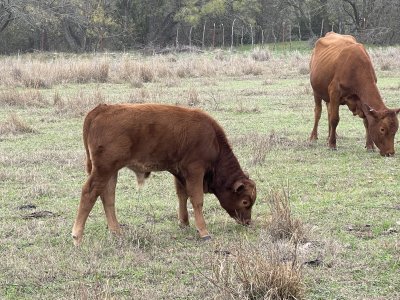I'm going to make an assumption that you want to learn about what makes a good bull.
EPDs give a good clue, but I value conformation at least as much. A good bull is going to be masculine. That mainly means muscle. I prefer a heavy rear end with deep muscle into the hock. The top line should be straight, the body reasonably deep, and not a lot of belly. Proportionate. The torso should have as much length as possible. This is where the money cuts come from. The brisket shouldn't be waste (fatty and large) and the sheath should be close to the body. In areas where a bull has to travel significant distances, places where a cow/calf unit barely survive on a hundred acres, people like some leg. On a smaller place leg isn't as necessary. A bull needs to move well, not too stiffly in the rear legs, relaxed in the front. Rear legs should have some angle rather than be vertical. Good feet are important.
Your calf is short coupled and leggy. He isn't deep in the body, but has some muscle in the rear but not deep, and isn't showing much masculinity. I don't know his age and he may muscle up more, but he'd be cut if he were mine simply because of his lack of length. Length is one of the most important criteria and professional buyers of your calves will notice.
I'd bet that
@Jeanne - Simme Valley could post some good examples of bulls you could learn from. I know she has some great cows.
That's how I look at a bull. Other people may have other criteria.

